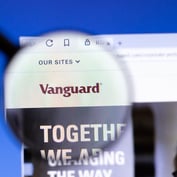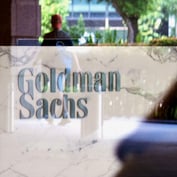The Clipper Fund has multiple managers. Can you describe how the teamwork process works? There are seven of us who do research. We spend most of our day trying to figure out what companies are worth, and whether they are undervalued. The way we approach the process, rather than having an anonymous analyst or a one- or two-manager approach, is that we all look at ourselves as analysts. That means we spend a lot of time going out and looking at companies. The way we come up with ideas is by looking at companies who are out of favor, or have dropping share prices. We spend time going out and visiting companies, making it a small team process. While some of us may be in favor of a given company, we always assign someone to play devil’s advocate. The purpose of this is to really challenge ourselves and ask if we are being too optimistic. The companies we tend to look at generate more cash than they consume. One of the biggest questions we need to ask after that is how management deals with that cash. We have to ask ourselves how are they investing the cash. Is the cash being compounded to meet shareholders’ interests? If we cannot come to that conclusion, we are not going to even get into the next step: the qualitative process. While we tend to find value in industry leaders, this doesn’t mean we always have to buy the market share, the leading companies. We’ve owned number two or a very strong number three from time to time. We’ll own an able competitor too if we find something of value. Essentially, once we can get our arms around the qualitative side of management, and understand where a company is going and understand whether or not a company is going to be around five years from now, we go to the next level, which is the quantitative side of the process where we have to figure out what the business is worth. We look at the intrinsic value, the absolute value. That means we don’t make our decisions based on a hope that interest rates are going to be cut next month or that the economy is going to grow x percent next year. Intrinsic value is sort of an enduring value. It’s what a rational buyer would pay. That’s where we spend most of our time. The ultimate driver of our valuation process is going to be a discounted cash flow valuation. Once we’ve calculated that, the process is fairly close to completion.
| Clipper Fund |
| 800-776-5033 o www.clipperfund.com Ticker: CFIMX Managers: Team managed Managers’ tenure: 17 years Fund started: February 29, 1984 Min. initial investment: $5,000 Load (front-end): 0.00% 12(b)1 fee: 0.00% Net assets: $1.9 billion SEC div. yield: 3.66% P/E ratio: 29.12 P/B ratio: 5.56 Median market cap: $25.90 million Expense ratio: 1.09% Turnover: 63% 3-year alpha: 0.60 3-year beta: 0.44 3-year r-squared: 0.49 3-year standard deviation: 3.33% Returns 2000: 37.40% 1999: -2.02% 1998: 19.20% 12-month (annualized): 16.39% 3-year (annualized): 12.74% 5-year (annualized): 16.87% Top Five Holdings Freddie Mac: 7.1% Philip Morris Co., Inc.:5.1% The Interpublic Group of Cos., Inc.: 3.9% McDonald’s Corp.: 3.9% Staples, Inc.: 3.8% |
What other factors are taken into consideration? The companies we look at usually have two to five key issues that spook investors. We spend our time asking what ifs. What that does is give us a greater level of comfort. In a worst-case scenario, we still want a company to be undervalued. Once we’ve stress-tested the valuation, the heavy lifting is essentially done. It can be a long process. As an example, we spent seven years following drug companies before we got involved. We spent 11 to 12 years following hospital management companies before we got into them around three years ago. We’re very patient investors. The whole philosophy of our process is to put ourselves in the shoes of the long-term buyer of investments. We ask ourselves what is a company worth, regardless of where the economy is going and where interest rates are headed; that’s what kept us out of the technology boom of 1999. We didn’t look the swiftest in 1999. We underperformed the market significantly. It was hard and frustrating, and we were a little annoyed. We don’t think valuations are for every company, but at that time the majority of publicly traded companies had been completely dislocated from their underlying fundamentals. What we did was say we weren’t going to play that game. For a period of time we were beaten up on, but we were justified in not getting caught up in the mania. We only like to buy companies with a margin of safety, ones that are trading at 70 cents or less on the dollar. When the share price reaches our definition of value, we discard. It’s actually a pretty simple philosophy. Our process is really a team process, rather than a portfolio manager sitting in an ivory tower.
You have a concentrated number of holdings. What are some of the advantages of having large corporate holdings such as McDonald’s and Philip Morris? We have about 30 holdings right now. Our historical range has been anywhere from 17 to around 31. Both McDonald’s and Philip Morris are good examples because both are out of favor right now, especially McDonald’s. We think McDonald’s is one of the most undervalued companies out there. It has a great global brand name. We repurchased our position in McDonald’s when it hit $30 a share about a year ago. The fact is that McDonald’s may not be the short-term gainer, and fears of mad cow disease exist, especially in Europe, but we are comfortable with the fact that over the next five years management is very focused on enhancing shareholder returns. We think management is managing the global business well. Buying high-quality companies allows you to have lower turnover, which saves investors money on taxes. It doesn’t guarantee lower turnover, but it makes a difference.
As for Philip Morris, you’ve got to have a pretty strong constitution to own them. Philip Morris is one of the greatest cash generating machines. The facts are that smoking is very unpopular and we realize it’s bad for you. One thing we have to watch with owning a tobacco company is the litigation issue. We do expect litigation to continue to be a problem in the future. However, most group litigation seems to be disappearing. The individual suits are still there, especially in California. We have built litigation costs into our valuation. What we do in valuating Philip Morris is use a higher discount rate than we would in a similar quality consumer product company. In other words, it has to jump over a higher hurdle. The higher the discount rate, the less value of tomorrow’s cash flow. We use a lower terminal valuation of the company. We do not assume that the litigation and costs associated with such are going to diminish. Historically, they have been able to recoup the higher costs of doing business as all tobacco companies do by raising prices on the consumer.
Can having a large position in one equity cause problems for your portfolio? Our philosophy is to focus on our best ideas. Anecdotally, you speak to most money managers and they are always most enthusiastic about 10 to 15 names. So philosophically, we focus on what we are most enthusiastic about, and we don’t play the benchmark and risk game. We think we are able to, at least at some level, minimize risk. You can never eliminate risk. The way we minimize risk is to focus on companies that are out of favor, and focus on companies that sell at a significant discount. By focusing on companies that are cheap, that has been a way we have historically been able to control risk. From our perspective, it is riskier for us to play the benchmark game where you don’t want to look too different from the benchmark so you add names. The names you add may be overvalued, but you add them to look like the benchmark. This, to us, is much riskier.
What sectors are you currently looking to for value? We tend to be opportunistic managers. We look at individual companies rather than defining a particular sector and jumping right into it. We purchase individual companies cheap. We never try to make a single sector bet. Our portfolio is fairly heavily weighted towards financial services companies and consumer cyclical products. It’s sort of where the value is right now. We haven’t woken up one morning and said, ‘We need to buy financial services.’ Instead, we wake up and say, ‘What’s cheap today?’ It allows us to sleep better at night.
With the market back up to pre-September 11 levels as of press time, what do you think the next six months hold in store? To be honest, I have no idea. The fact of the matter is, there are very few companies today that meet our valuation criteria as being undervalued. Usually, when it’s very difficult for us to find undervalued companies, there’s a reason for it. With what happened on September 11, we still haven’t found many cheap companies. We bought a position in United Technologies and added to our position in American Express. That’s about it. We just haven’t had a huge proliferation of opportunity after September 11.
With opportunities for value at a minimum, does that mean you take a large cash position, sit back, and wait? Exactly. It may be a bit of a clich?, but as Warren Buffett and other great investors used to say, rule number one of investing has always been, try not to lose money. And rule number two is, don’t forget rule number one. To be honest, returns that have been generated in the 1990s are extremely unlikely to be repeated any time soon. We’ve been telling our clients not to expect returns over the next few years of more than mid-to-high single digits. With that in mind, the next goal is to preserve capital.
Who would you say is the ideal investor for this fund? I think the ideal investor is someone who does not have high expectations. More importantly, it’s someone who has a long-term investment horizon and someone who has capital preservation in mind. Our people are trained to let potential investors know not to even consider investing in our fund unless they have at least a five-year time frame in mind.








 January 09, 2002 at 07:00 PM
January 09, 2002 at 07:00 PM










